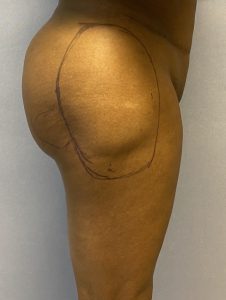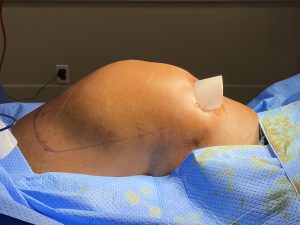Background: Hip augmentation has become a more commonly requested procedure today undoubtably due to the rise on BBL buttock augmentation procedures. Buttock augmentation often makes the hip areas look deficient by proximity and comparison. But unlike buttock augmentation, either by fat injections or implants, achieving satisfactory hip augmentation is not so easy.
While the ideal method for hip augmentation is fat injections they do not work as reliably as in the buttocks. This is either due to lack of adequate injectate volume due to depleted donor sites (from doing the buttocks) or a thin body shape or the unfavorable recipient location of the hips. It is not clear why the subcutaneous hip location has such poor fat retention compared to the buttocks but substantial clinical work supports that they just don’t work well…particularly if the needed volume/desired shape is significant.
When fat injections have failed for hip augmentation this leaves implants as the only remaining treatment option. While hip implants do not provide reliable volume and shape, unlike fat injections, they have their own unique implants-related issues…many of which are unique to the hip implantation site.
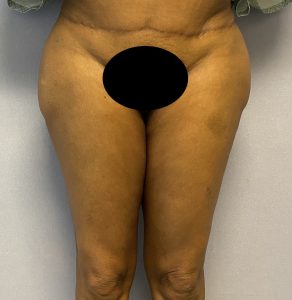

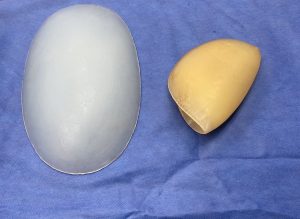
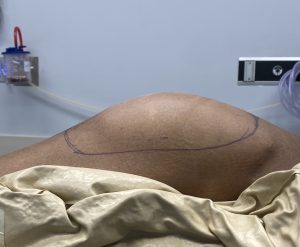
One of the many unique features and problems with hip implants is this delicate balance between a stiff enough implant to allow proper placement and an implant that may feel too firm. While an ultrasoft implant seems more ideal for the hips it can work against good implant unfolding and positioning. There is also the balance between implant projection, patient desires and complications…thinner or less projecting implants seem prone to a lower risk of postoperative problems but that unfortunately can lead to its own unique issues as seen in this case.
One of the very common aesthetic issues with hip implants, because of their vertical location on the hips, lack off adhesion of the soft tissues to the implant and the shape of the implant, is implant edge show at its inferior location. This patient had it beforehand (as seen on the right side) and larger implant replacements are not likely to eliminate that aesthetic issue. Fillers or fat injections may be needed secondarily to treat that implant problem.
Case Highlights:
1) Thin soft hip implants are prone to folding and malposition usually occurring during placement.
2) Even thin edged hip implants have a propensity for inferior show.
3) Larger custom hip implants provide improved hip augmentation and no risk of implant folding but the likelihood of inferior edge show remains.
Dr. Barry Eppley
World-Renowned Plastic Surgeon




